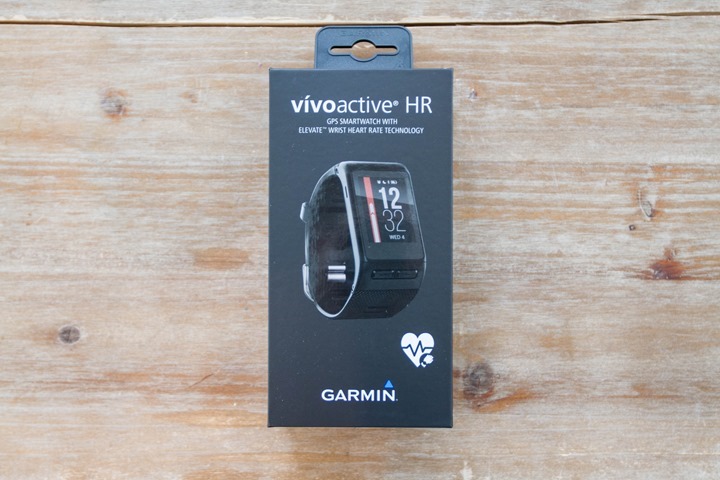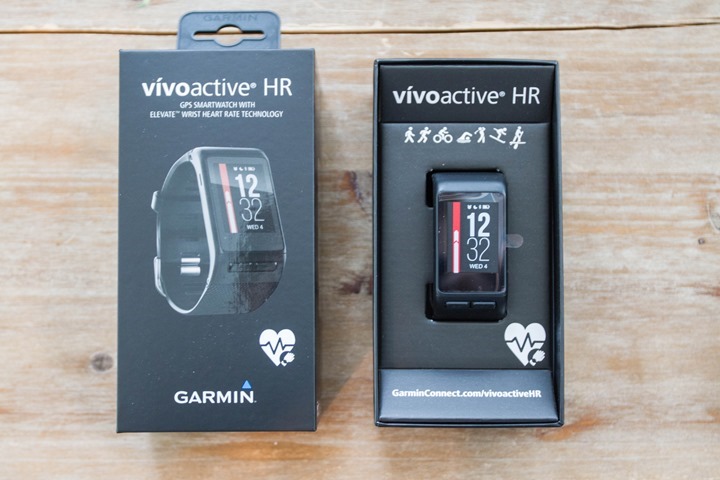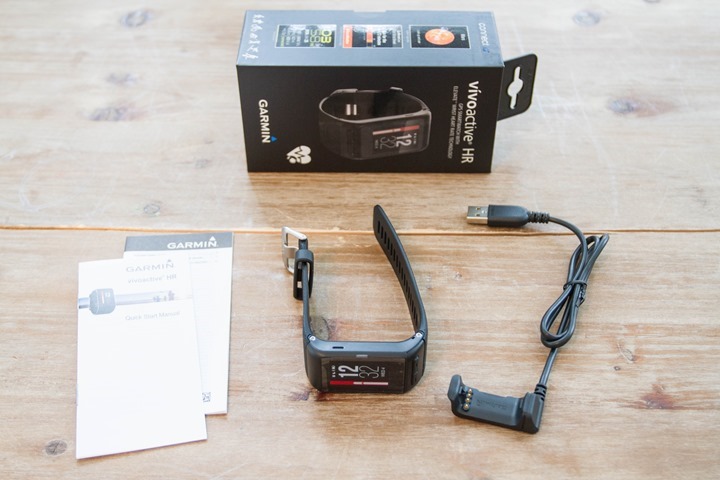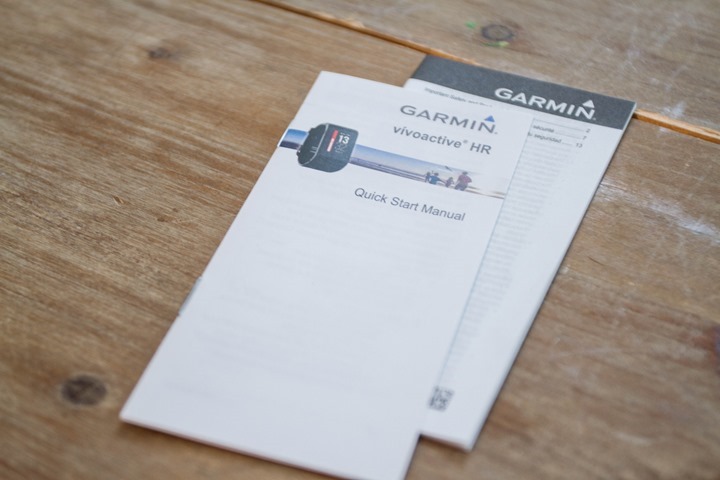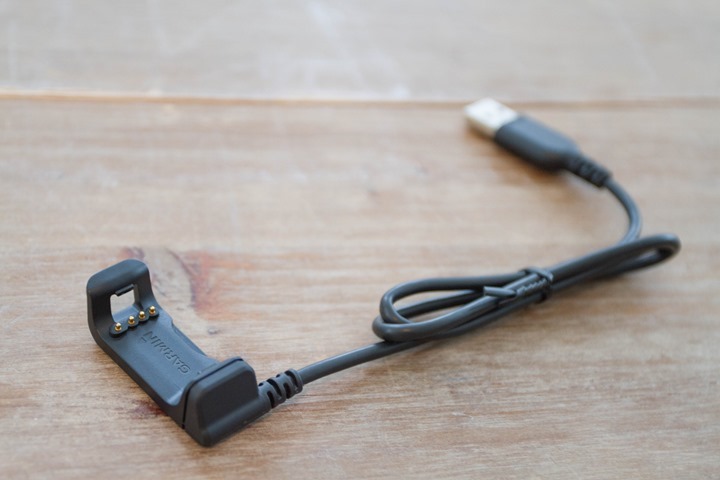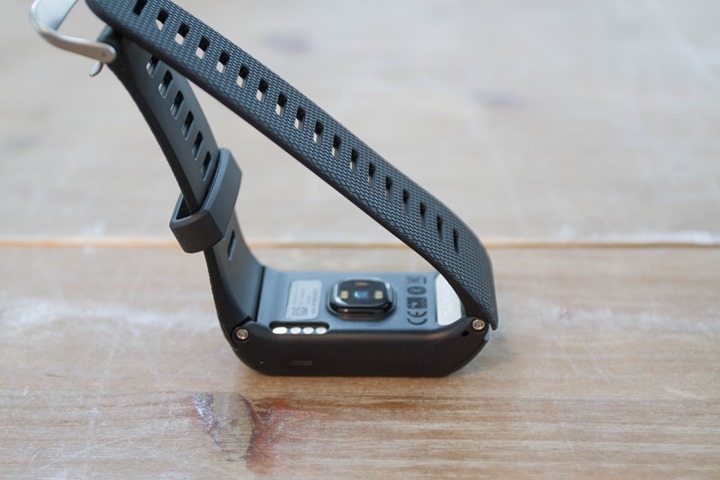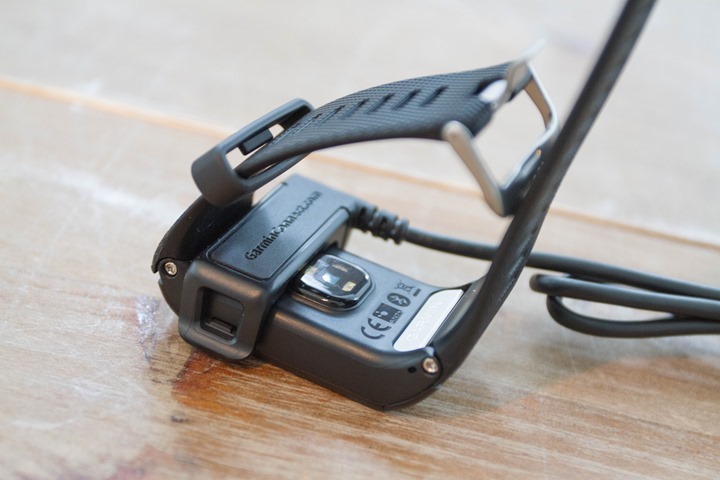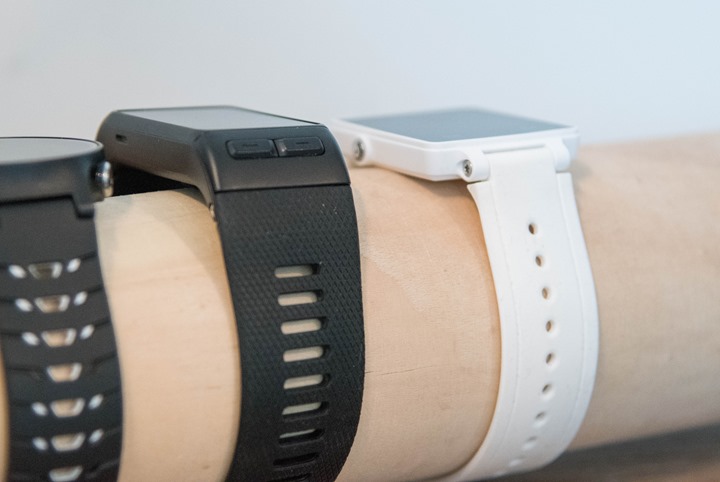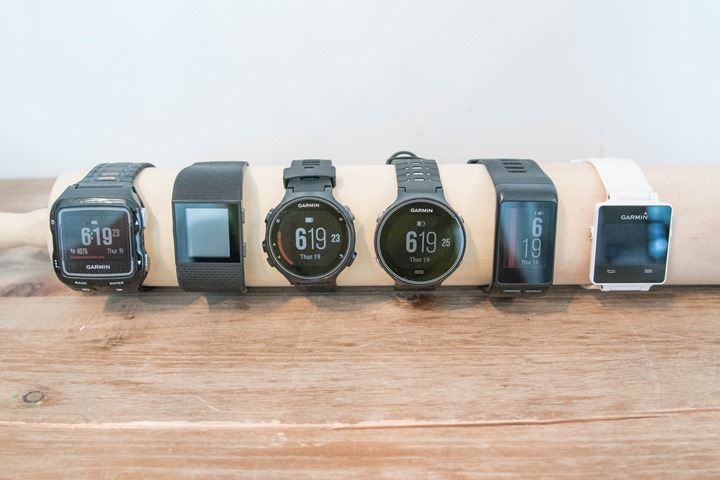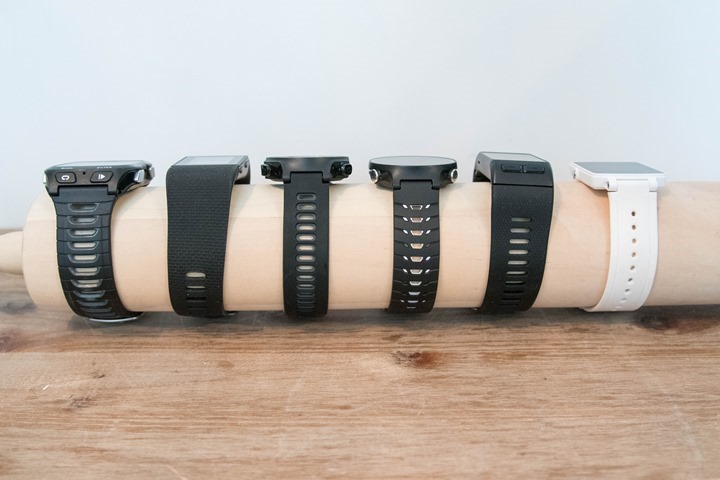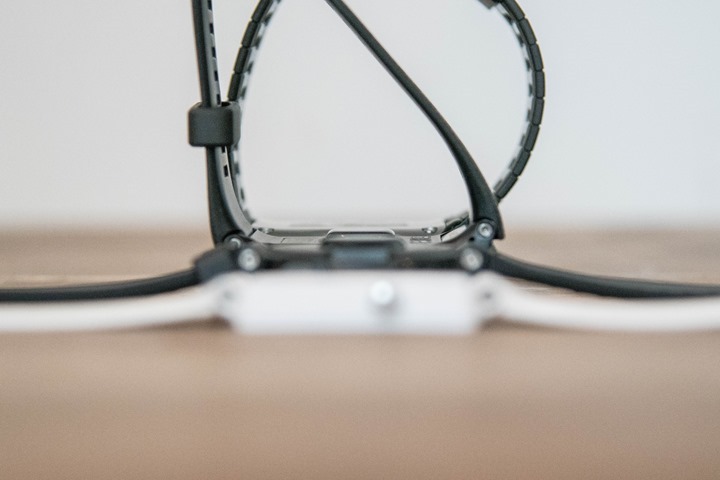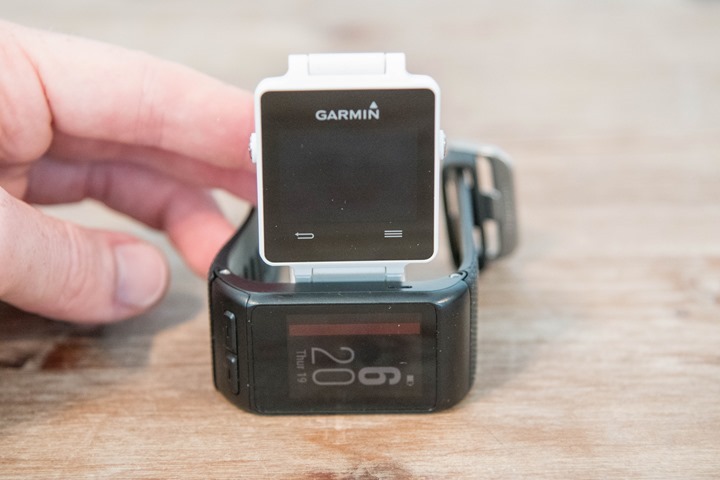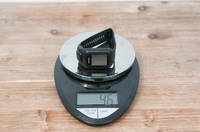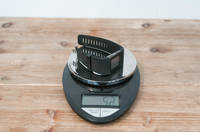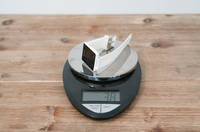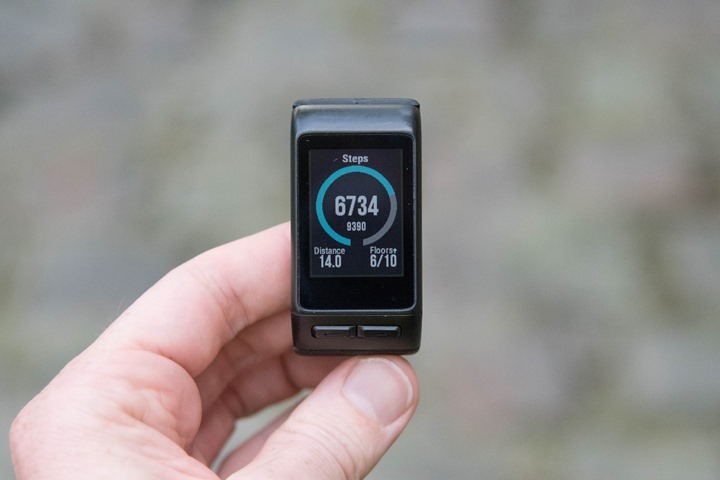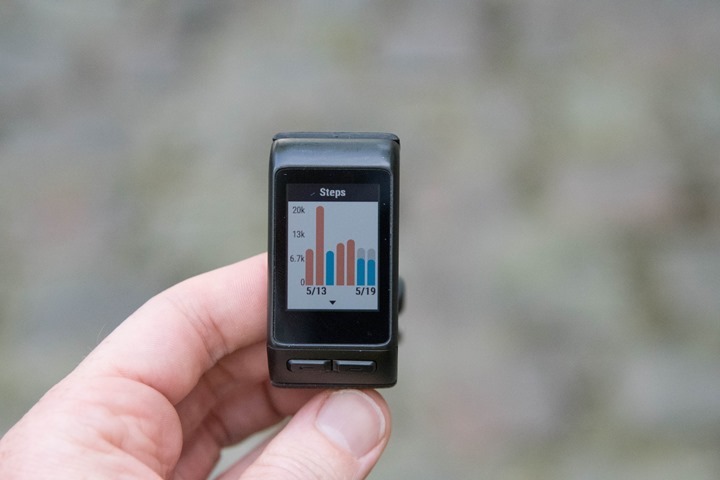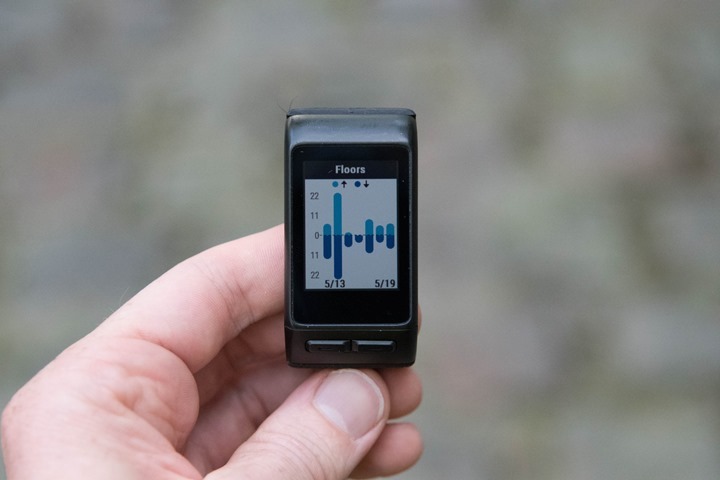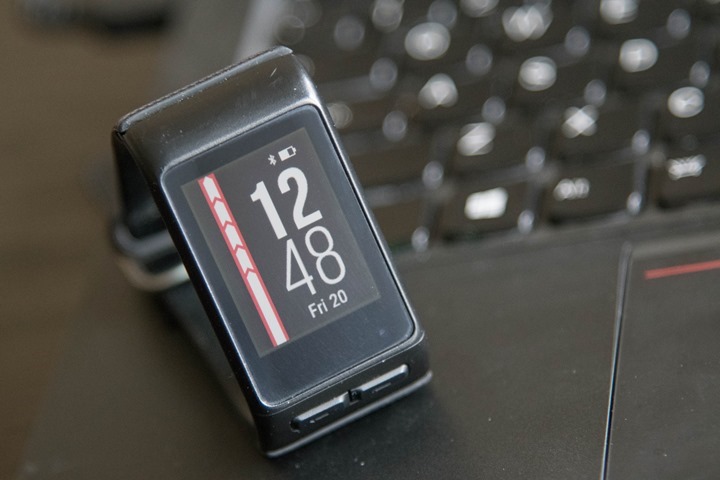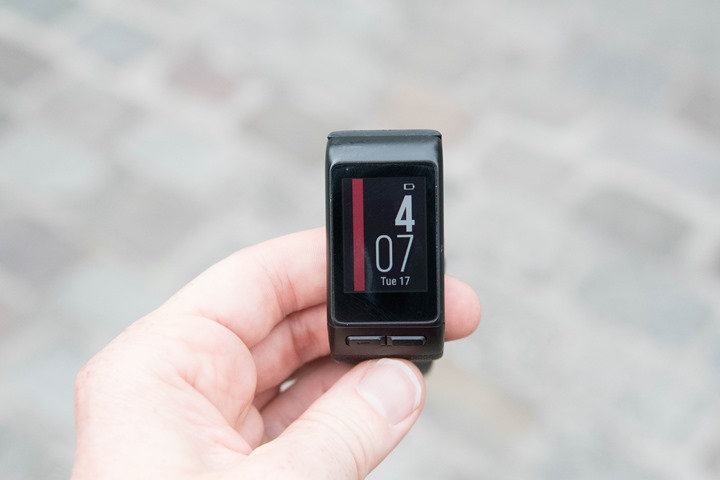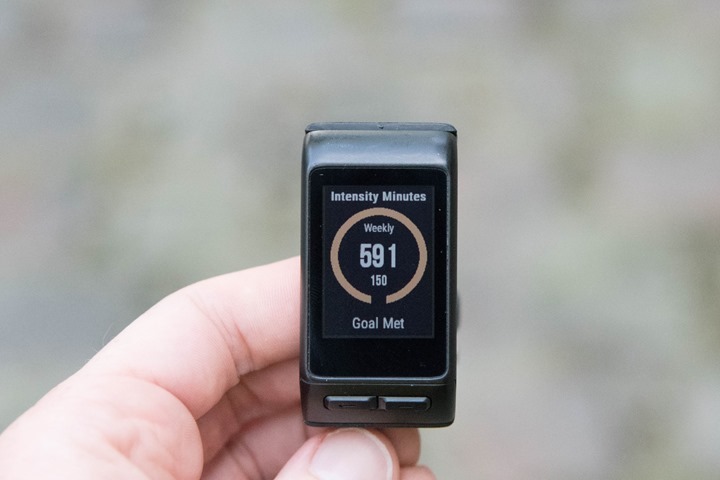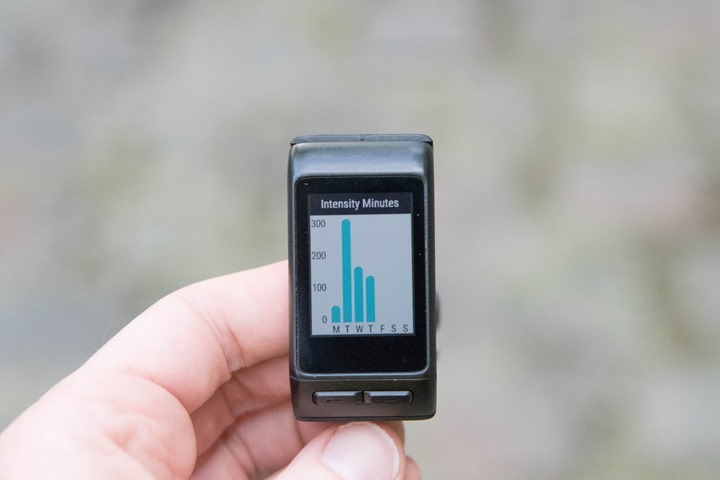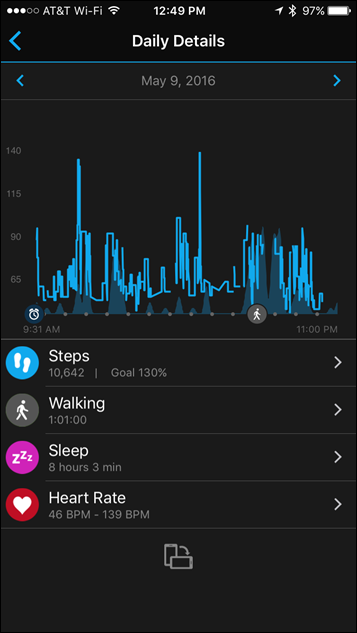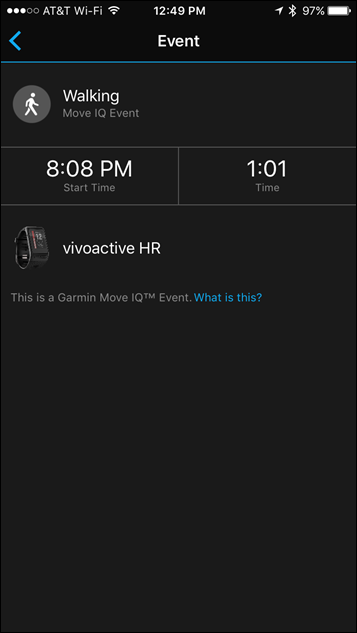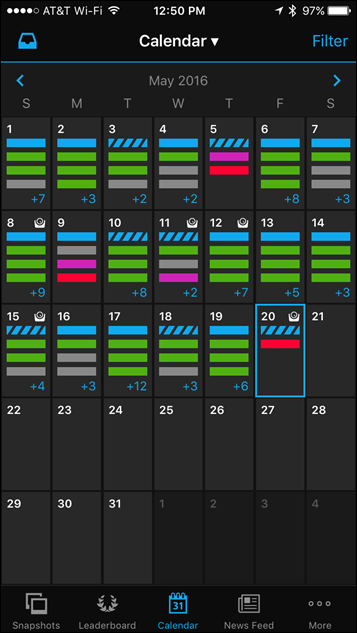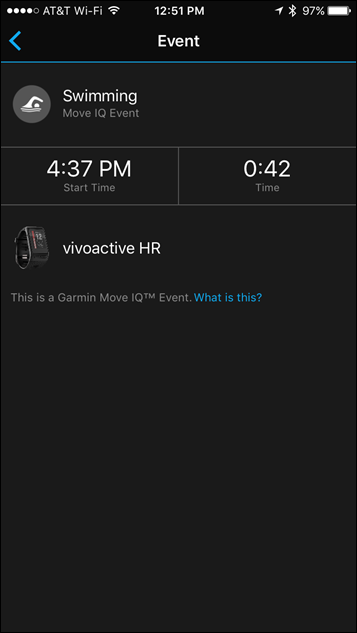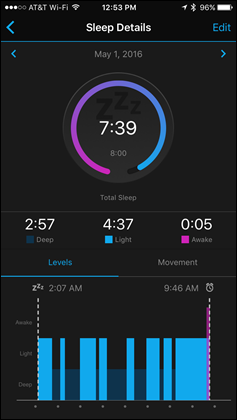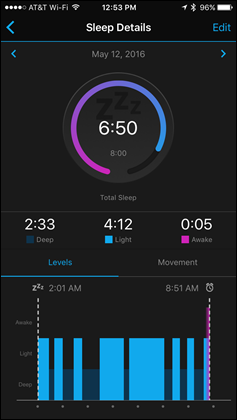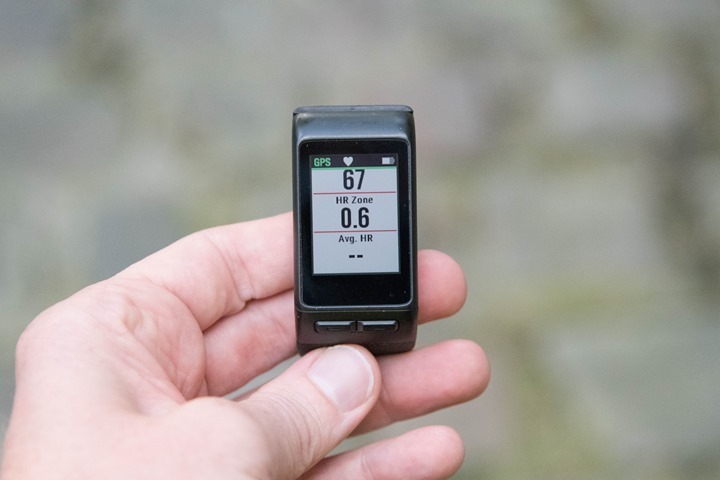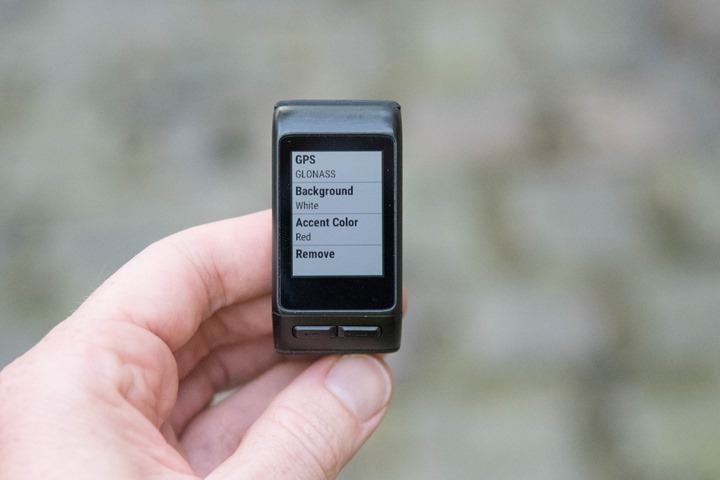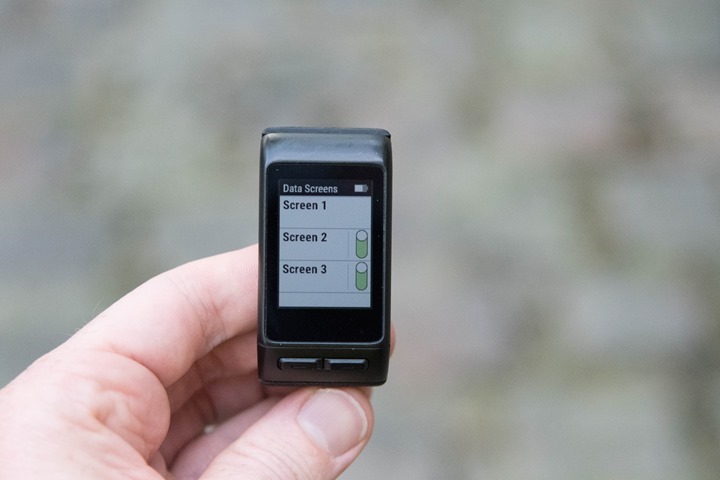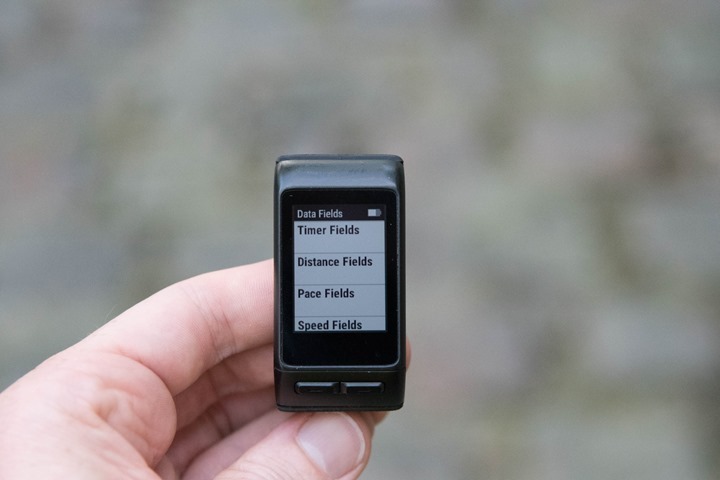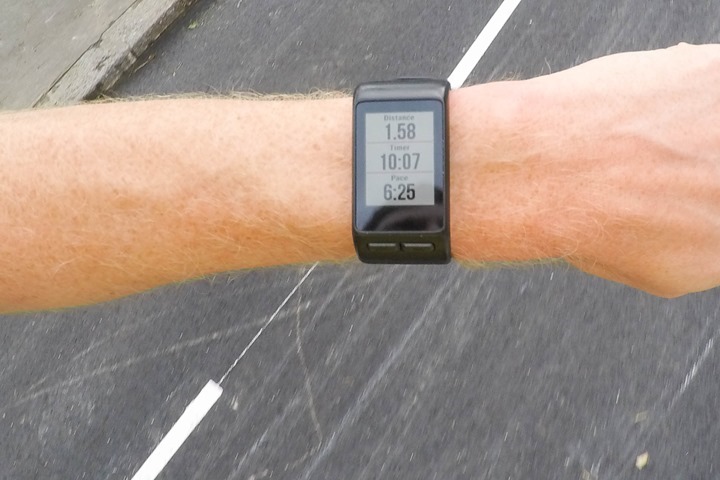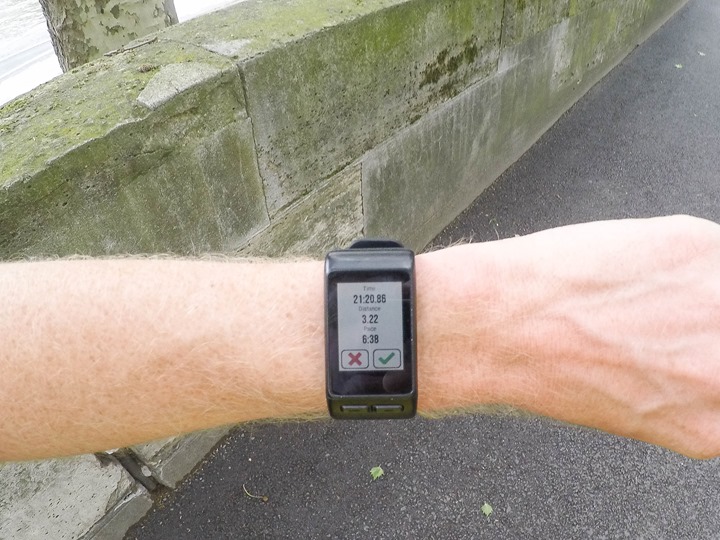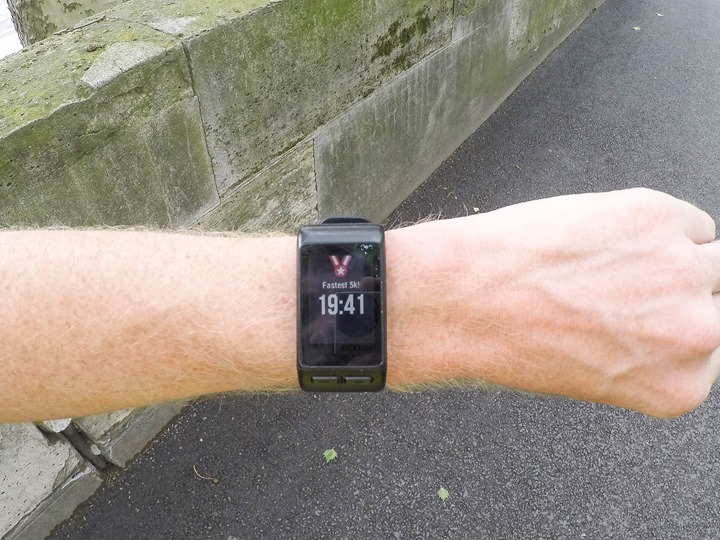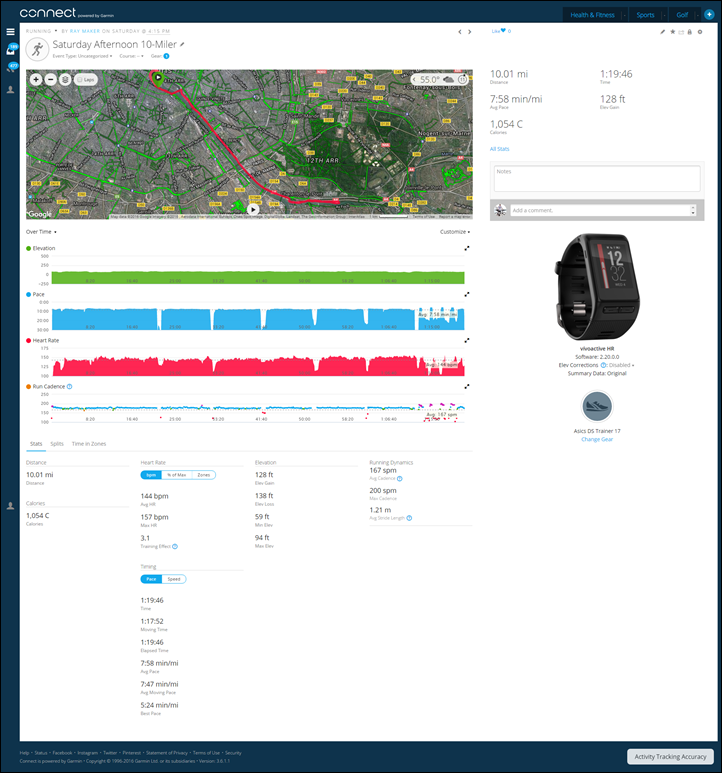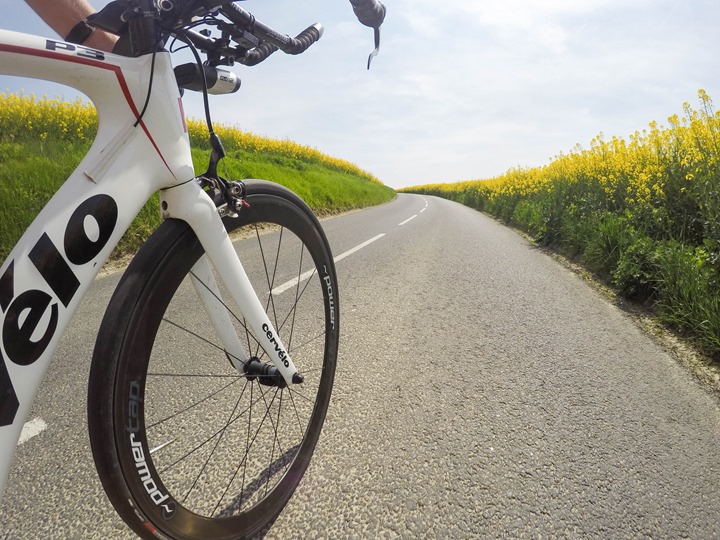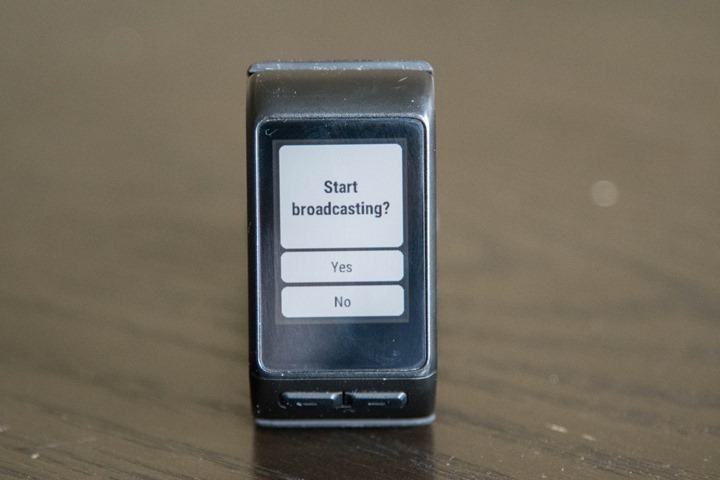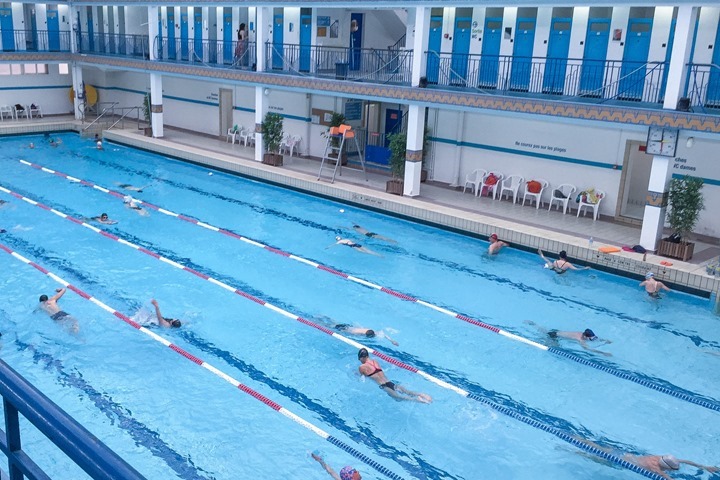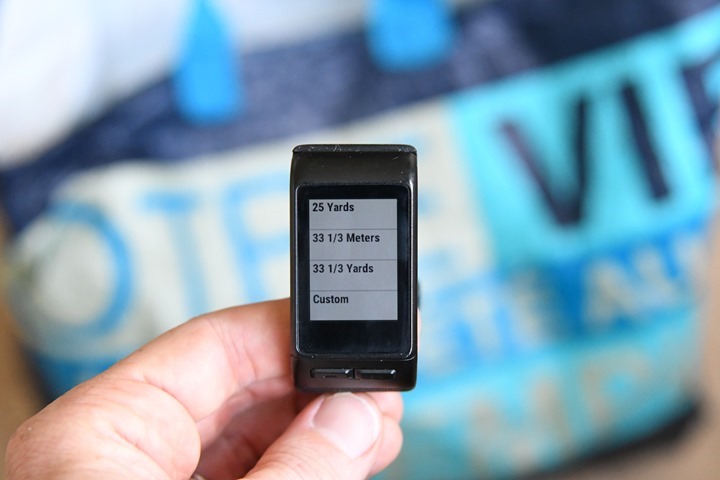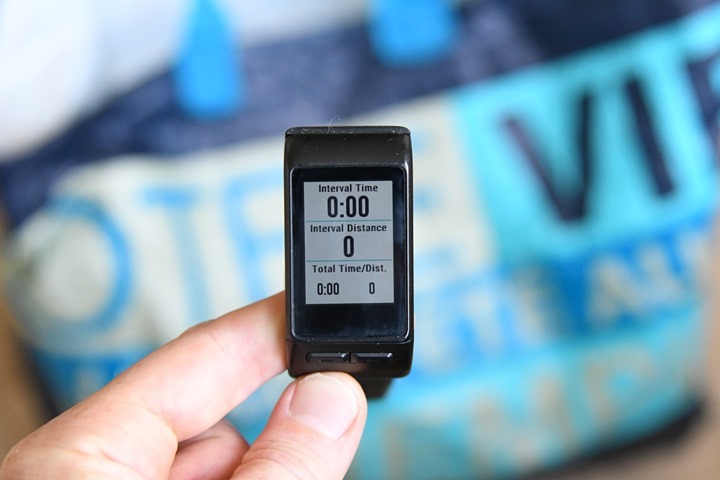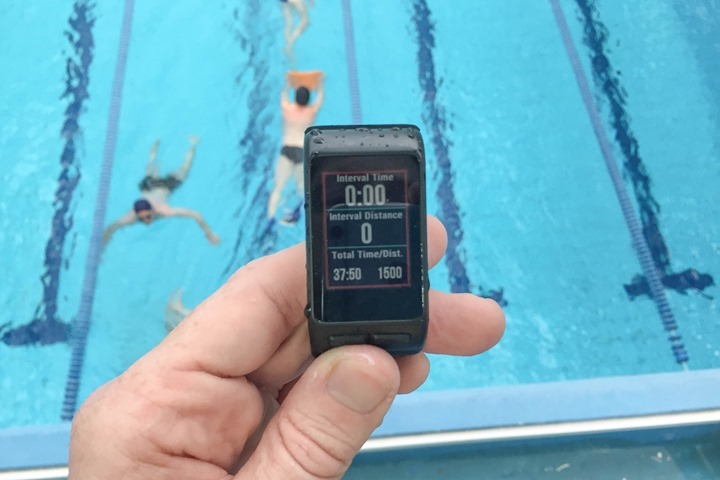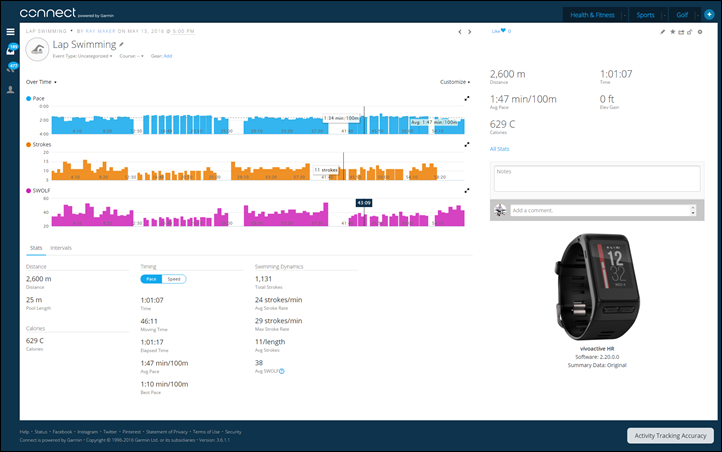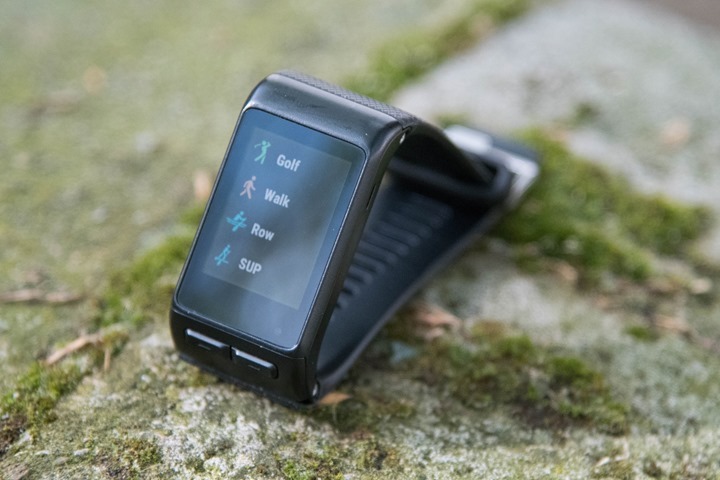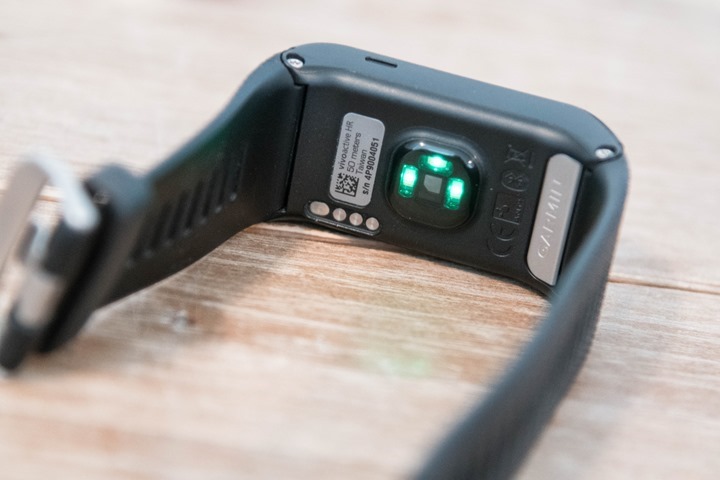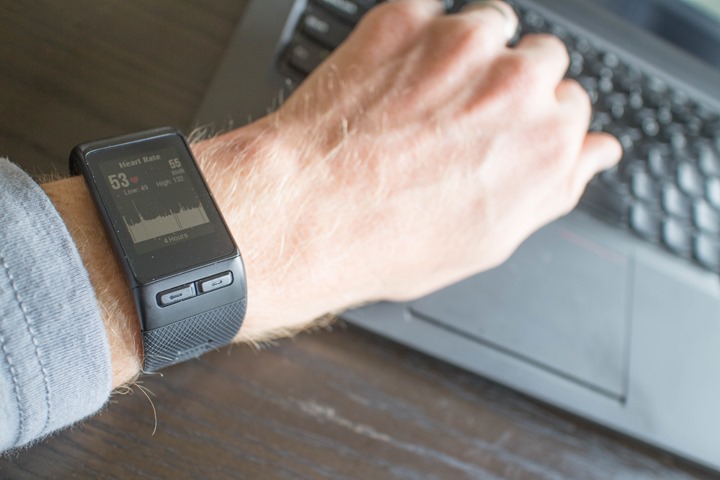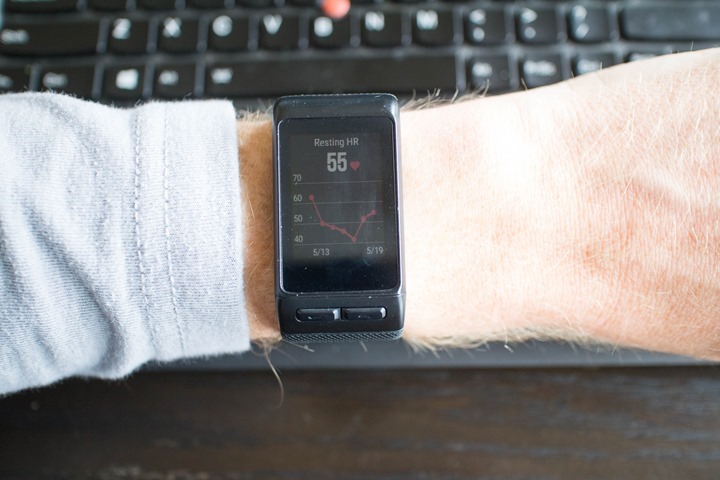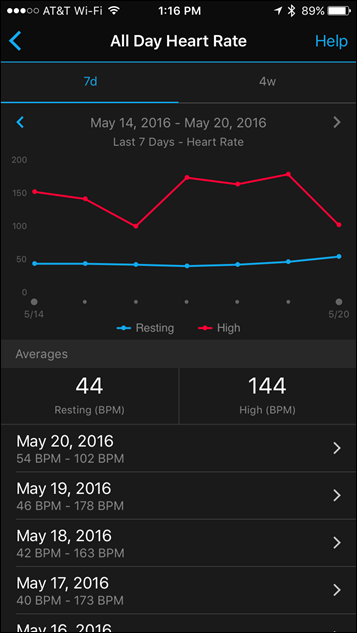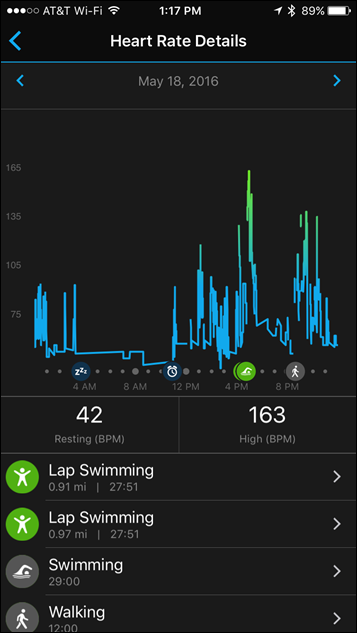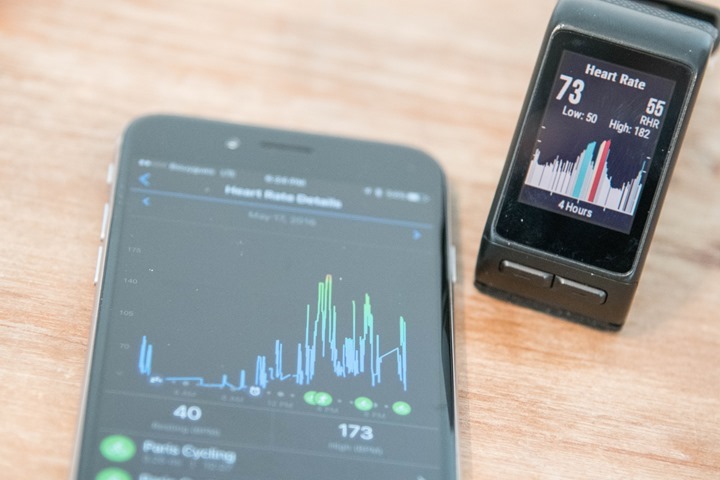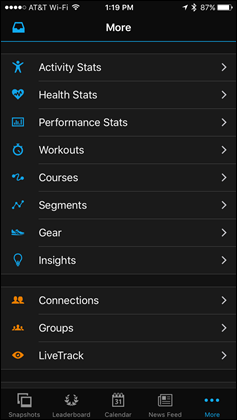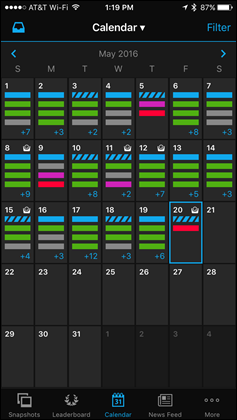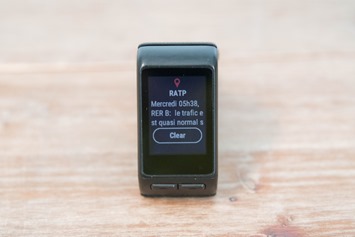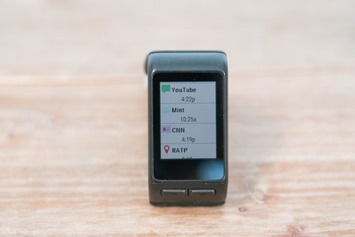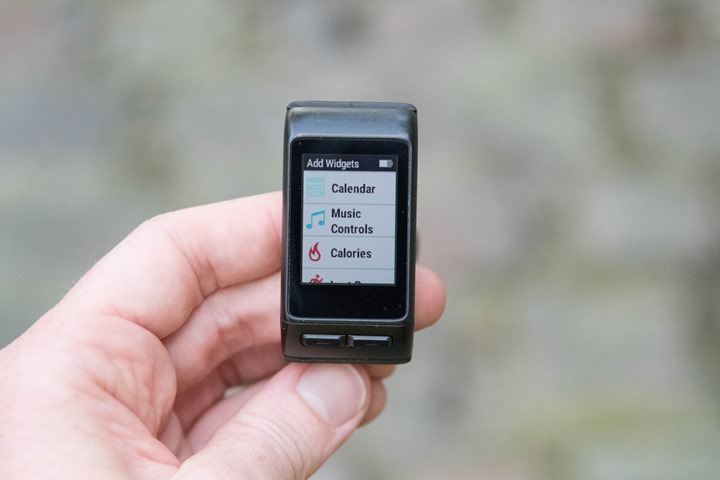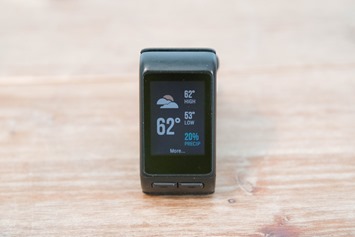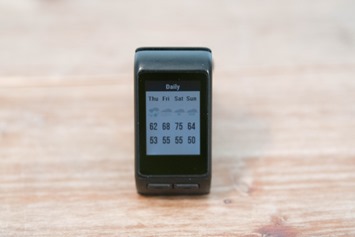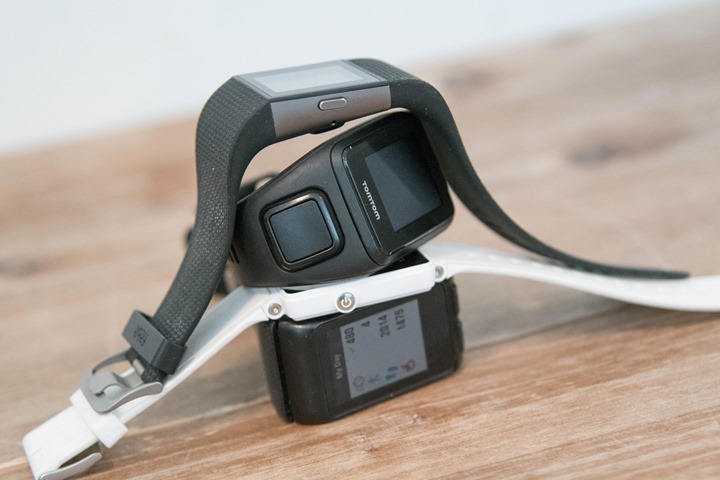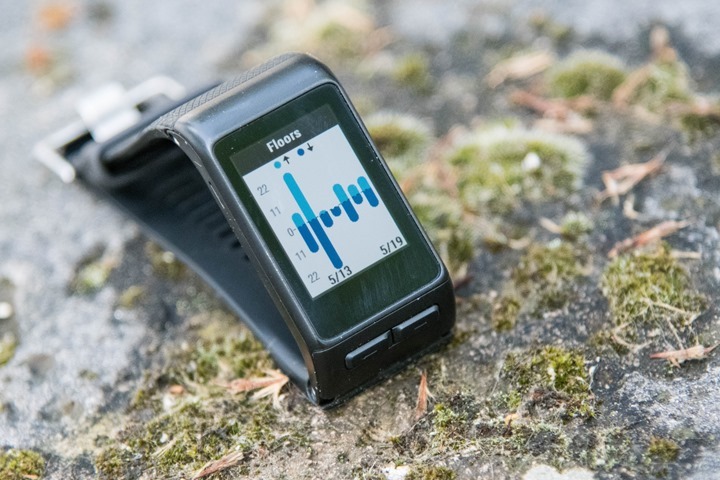A GPS sensor and better water resistance make the new Apple Watch a serious fitness tracker

The Apple Watch Series 2 is exactly that. It’s what Apple had resisted calling its wearable for the past year and a half, even declining to categorize it as such when citing industry rankings, opting for the “smartwatch” category instead. It is, definitely, still a smartwatch. But the Watch now has focus, and that’s a good thing.
From the first Apple Watch, which came out in April of 2015, Apple learned that lots of people were using it primarily for health and fitness-tracking purposes. They had been groomed by years of Fitbits and Jawbones and Garmins and Polars and “smart” scales and the whole notion of the quantified self, which promises self-betterment if you could just get a handle on your personal data. Apple learned that people will pay for technology that promises an escape from technology, even if only for 30-minute sweaty increments of time.
The first Apple Watch was a traditional first-gen Apple product: elegant in its design, but lacking key components; a more intuitive interface than a lot of its competitors had to offer, but glitchy and with slow-to-load apps. But Apple is rich and influential enough that it can miss once and still get a do-over, something not every tech company gets. Apple can afford to iterate. And it has.
The Apple Watch is now both more and less of the things it was trying to be. The addition of GPS and better water resistance make it more of a fitness tracker. The new, distilled software means it doesn’t have ambitions of acting like a “smartphone replacement,” and instead it feels more like a useful accessory. Is it as essential as the smartphone? No, it may never be. But it now makes a little more sense as part of the Apple ecosystem.
Old and new
The Apple Watch Series 2 comes in three models: the least expensive aluminum model that starts at $369; the stainless steel model that starts at $549; and a ceramic model that starts at $1,249. There’s also a Nike-branded version of the sport watch that will ship in late October. All of these watches have the same internals, just different external materials.
 Apple has even gone ahead and upgraded
the original Apple Watch with a faster processor and a lower starting
price point ($269). With the addition of WatchOS 3 software, this
first-gen watch will get many of the features of the newer one. Even
still, $269 is more expensive than a basic Garmin running watch, Pebble
smartwatches, some Android Wear watches, Samsung Gear Fit 2, Microsoft
Band, or even the performance-focused line of Fitbits. But given how far
ahead Apple is in the smartwatch market, it’s obvious that at least
some iPhone owners will pay a premium for the activity-tracking and app
platform that Apple Watch offers.
Apple has even gone ahead and upgraded
the original Apple Watch with a faster processor and a lower starting
price point ($269). With the addition of WatchOS 3 software, this
first-gen watch will get many of the features of the newer one. Even
still, $269 is more expensive than a basic Garmin running watch, Pebble
smartwatches, some Android Wear watches, Samsung Gear Fit 2, Microsoft
Band, or even the performance-focused line of Fitbits. But given how far
ahead Apple is in the smartwatch market, it’s obvious that at least
some iPhone owners will pay a premium for the activity-tracking and app
platform that Apple Watch offers.The new Watch looks almost exactly like the old Watch. It’s like the iPhone 7: no one will notice that you’ve got the new model, which shows a confidence in the original design, but may also disappoint you if you like to show off that you have the latest and greatest gadget. It’s the exact opposite approach Fitbit — Apple’s main competitor in the fitness-tracking world — has taken this year. Fitbit has released four new wearables, all different in their design, but with much of the same technology distributed throughout them. Apple has retained its old design, but added new technology.
There are small differences in the new Watch’s appearance. The OLED display on the new Watch is brighter — in fact Apple says it’s the brightest display it has ever made. And if you look closely enough, you can see that the new Watch is just a tad thicker (0.9mm, to be exact). But again, it’s kind of like it just ate a big meal; you might be aware of it, but no one else will notice. Also, imagine that big meal was a bigger
battery.

Let's get physical
Let’s, uh, dive right in: you can wear the new Apple Watch while swimming. The previous model was already somewhat water resistant, but now it’s water resistant up to 50 meters. The Watch’s Workout app tracks both pool swims and open water swims, recording laps, distance, and stroke style.When you start one of these swim workouts, the Watch auto-locks the touchscreen display. Apple says this is so the Watch won’t react to water droplets or water pressure as it would your finger. Before you hit "End" on the workout, you have to twist the physical crown on the Watch. It then emits a sound, one that sounds uncannily like a mosquito flying close to your ear, and the vibration pushes water out the horizontal speaker holes. It is a strange and kind of brilliant way to get water out of the ports of a consumer electronic device.
The Watch’s new level of water resistance will please a lot of people; it’s something that impacts not just swimmers but anyone who has jumped in a pool with the Watch on, or who, you know, showers. (The Watch also has a water-lock feature separate from the swim function, accessible when you swipe up from the bottom of the home screen.)

But while the waterproofing is useful, the addition of GPS is a much bigger deal. It was easy to knock the first Apple Watch as a fitness device; I know because I often knocked it for this. A $349 sport watch without GPS was like an expensive sports car without turbo. Do you absolutely need it? No. But does it make the thing more legitimate? Yes.
Now you can go outside, without your iPhone, and run and cycle and hike to your heart’s content and the Apple Watch Series 2 will receive a GPS signal. It will calculate your distances, and show a map of your workout in the Activity app on your iPhone.
gps is what really makes this a sport watch
Well, maybe not all the way to your heart’s content: the Watch’s battery only lasts for five continuous hours while pulling down a GPS signal. Also, the Watch doesn’t indicate that it’s using GPS while you’re in an outdoor workout mode. You just have to assume it’s working. I suspect this is because Apple doesn’t want people to experience the "searching for GPS" message that pops up on a lot of sport watches. The company says that it will start searching for a signal as soon as you open the Workout app on the Watch — even if you haven’t specified that you’re doing an outdoor workout — and will use data from other sensors, like the accelerometer, to fill in the gaps until it has located GPS.
Maybe you don’t care about all that, and you’re only concerned with accuracy. You’ll be happy to hear that it’s been accurate for me so far. I tested the Watch on my usual walking, running, and cycling routes. I didn’t bring my iPhone, since the Watch will default to using the iPhone’s GPS if it’s in range. The recorded distances were almost exactly what my smartphone and other GPS watches have recorded in the past: a one-mile walk was exactly 1.00 on the Watch, my 13.3-mile bike route came up as 13.39 miles, and my 3-mile neighborhood run was recorded as 3.02 miles. These are extremely small margins of error, and it’s also possible that it was human error (i.e., me covering a slightly shorter or longer distance than I normally would).

Aside from the water resistance and GPS, Apple Watch’s activity tracking and exercise options are very similar to the functions on the original Watch. The optical heart rate sensors are exactly the same. And your daily activity is still displayed in a series of multi-colored rings both on the Watch itself and in the compatible iPhone app. Some people find this visual representation motivating; one of my co-workers recently went on a 30-day streak of activity, becoming obsessive about "closing the rings" on his Apple Watch. Some people might still prefer the actual step count that other trackers show them.
 |
| Many activity-tracking features are the same as before |
There’s also a new built-in app on the Watch that reminds you to breathe deeply once in a while, all part of a growing trend around mindfulness. I haven’t used this much yet. Right now, this feature feels like the "Time to stand!" nudges. Sure, you might feel better when you pay heed to them, but they’re also easy to ignore.
All of these data are synced over Bluetooth with Apple’s Activity app on iPhone, just like before. The most notable change in the Activity app is that it now offers social sharing — which, if anything, Apple is behind on. This is a testament to the value of what other companies like Fitbit have been doing for years. Now you can get pinged when your friends have finished workouts with their Apple Watches, and you can leave them encouraging messages. But, in true Apple fashion: it kicks you out to iMessage when you want to do this.

Still a smartwatch
So what about the non-fitness stuff? The everyday stuff? The is-Apple-Watch-any-faster stuff? All valid questions. The first Apple Watch suffered from slow-to-load apps and had an interface that required lots of taps and swipes. Its promise as a new platform for apps led some people to wonder whether it was meant to be a replacement for a smartphone, which of course it could not be. Now the Watch feels like it is closer to the right combination of fitness tracker, app notification system, and control center for stuff you want to do on other devices.Part of this improvement is due to the Watch’s new dual-core processor, which is said to be 50 percent faster. But a bigger part of it is also its new software, watchOS 3, which will be available for all Apple Watches, not just the new ones.
WatchOS 3 makes the Watch feel faster and more fluid. Swiping down from the top of the Watch still shows you notifications, but now, when you swipe up from the bottom of the Watch, you have a mini command center right there. Pressing the physical side button brings you to an app dock, so you don’t really even have to go to that cluster of tiny apps anymore, unless you’re looking for an app you don’t have saved to your dock. You can change watchfaces just by swiping from edge to edge.
WatchOS 3 is a big part of the better Apple Watch experience
This also means you’re not using Force Touch quite as much on the Watch, although, you can still use it to change and customize watchfaces, or you can press on your location in the Maps app to search for another location. But, you end workouts now by swiping, not by hard pressing like you used to.
I haven’t been able to try many third-party apps yet, since apps for watchOS 3 just became available yesterday. But it’s safe to say that these will have a big impact on the overall Apple Watch experience, just as they did with the first Watch. Third-party apps will also alter the health and fitness experience, because of the way data-sharing works. For example, running app RunKeeper has a watchOS 3 app, as does Runtastic, but Strava, another popular cycling and running app, does not yet.
And Apple’s Activity app is currently able to pull in data from the Strava app, but the workouts I’ve recorded using the Apple Watch aren’t showing up in my Strava feed.

Room for improvement
But for all of the improvements, some of the hassles from the original Watch remain. Apple still has a lot of work to do.I’ve noticed the display still doesn’t wake every time I raise or twist my wrist, which is annoying. And, even though the screen is now brighter and easily visible in normal daylight settings, it’s still tough to see in direct sunlight. At the end of the day this is a smartwatch with a retina OLED display, and not a reflective display like on other sport watches. It also doesn't measure elevation when you're recording an outdoor workout.
Familiar hassles remain
For whatever reason, I’ve had trouble syncing my iTunes to the Watch, which can support up to 2GB of music. I can’t say I’m remotely surprised that I encountered something problematic with iTunes. A spokesperson for Apple said the company is aware that this may affect some people and is actively working to solve it.
Finally, the battery life: the new Watch has a bigger battery in it to compensate for the GPS and the brighter display. And it’s definitely better than the first Watch: a couple days ago I put the Watch on first thing in the morning, popped the display up to full brightness, went through a day of notifications, used GPS during an hour-long bike ride, and still had 20 percent battery left later that night. But it’s still a charge-every-day kind of thing if you work out, which is one of my least favorite aspects of smartwatches.

If you’re considering the Apple Watch as a fitness tracker, it’s
actually fairly easy to go down the line and answer a series of
questions. If you already have an iPhone, really want GPS and
waterproofing, like the app notifications, don’t care about having to
charge it every day, and have at least $369 dollars to spend, then go
for it. Athletes who want a tri-sport mode, a completely visible
display, and hours and hours of GPS-equipped battery life will want to
look elsewhere. In terms of fitness tracking, it’s still a big step up
from the first generation.
But beyond health and fitness, the question of whether to get an Apple Watch comes down, more than ever, to the question of which ecosystem you want to live in. Unlike many other wearables, even ones that run Google’s platform, when you buy an Apple Watch you’re buying into Apple products in general. Together, the iPhone plus Apple Watch plus AirPods work well. Only one of them works well alone, and it’s not the Watch.
The Apple Watch is also part of a picture of modern tech — one that is slowly coming into focus, but might still be fuzzy for a lot of people. It’s a scene where the phone is basically a pocket computer that acts as the central processing hub, but our interactions occur through other things. The AirPods I’ve been using are preproduction units, so our review won’t be posting until later, but in my experience so far, they take away the friction that comes with Bluetooth earphones. Once I connected them with the new iPhone, they were automatically paired with the Watch on my wrist.
There’s something effortlessly cool (and yes, expensive and even ridiculous) about having your phone ring across the room or in your bag, looking down and accepting the call on your wrist, and knowing the wire-free AirPods in your ears are going to pick up the call. We’re entering an era where technology hardware might eventually disappear into the background, as touch and voice and gesture become our more frequent interactions, but the irony is that all of this requires piling on a bunch of hardware to get there first.
The Series 2 Watch is another step in that direction. It’s another piece of hardware on your wrist, one that looks the same as the one before it. But it’s not about a new form factor; Apple has made that clear with its newest products. It’s about what the thing can actually do.
But beyond health and fitness, the question of whether to get an Apple Watch comes down, more than ever, to the question of which ecosystem you want to live in. Unlike many other wearables, even ones that run Google’s platform, when you buy an Apple Watch you’re buying into Apple products in general. Together, the iPhone plus Apple Watch plus AirPods work well. Only one of them works well alone, and it’s not the Watch.
The Apple Watch is also part of a picture of modern tech — one that is slowly coming into focus, but might still be fuzzy for a lot of people. It’s a scene where the phone is basically a pocket computer that acts as the central processing hub, but our interactions occur through other things. The AirPods I’ve been using are preproduction units, so our review won’t be posting until later, but in my experience so far, they take away the friction that comes with Bluetooth earphones. Once I connected them with the new iPhone, they were automatically paired with the Watch on my wrist.
There’s something effortlessly cool (and yes, expensive and even ridiculous) about having your phone ring across the room or in your bag, looking down and accepting the call on your wrist, and knowing the wire-free AirPods in your ears are going to pick up the call. We’re entering an era where technology hardware might eventually disappear into the background, as touch and voice and gesture become our more frequent interactions, but the irony is that all of this requires piling on a bunch of hardware to get there first.
The Series 2 Watch is another step in that direction. It’s another piece of hardware on your wrist, one that looks the same as the one before it. But it’s not about a new form factor; Apple has made that clear with its newest products. It’s about what the thing can actually do.
Edited by Dieter Bohn and Dan Seifert. Photography by Vjeran Pavic. Video by Tyler Pina and Vjeran Pavic.
Editor's Note: My colleague whom I described as
obsessed with closing his Activity rings has asked me to clarify that
statement. He says he was on a 43-day streak, not a 30-day one.










